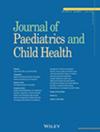Vitamin C Deficiency in Children: Clinical Characteristics, Testing Patterns and Management Outcomes at a Tertiary Paediatric Hospital
Abstract
Aim
To determine the clinical characteristics and management outcomes of vitamin C deficiency in a paediatric tertiary hospital cohort.
Methods
Retrospective review of all serum vitamin C tests from August 2020 to January 2023 at a tertiary paediatric centre. Vitamin C deficiency was defined as < 40 μmol/L, with ≤ 10 μmol/L as critically deficient. Demographics, clinical indications, interventions and follow-up results were analysed using descriptive statistics, chi-square tests, Mann–Whitney U tests and logistic regression.
Results
From 1923 tests in 1350 patients (median age 8.4 years, 58.5% male), 25.2% were deficient (< 40 μmol/L) and 5.4% critically low (≤ 10 μmol/L). Inpatients and older children had higher deficiency rates (p < 0.001). Oncology and renal specialties demonstrated the highest deficiency yields. Age, inpatient status and oncology referrals independently predicted deficiency. Clinical indications included suspected scurvy symptoms (29%, deficiency yield 25.8%), routine screening (21%; yield 31.5%) and unclear reasons (49%; 22.2% yield). For patients with critical vitamin C deficiency (n = 86), oral vitamin C supplementation was most common (69%) and follow-up levels (available in 47%) showed improvement in 90%, with normalisation in 62.5%.
Conclusion
Vitamin C deficiency was common in this paediatric cohort. Improved clinical vigilance, clearer documentation of test rationale and consistent follow-up practices could optimise outcomes for affected children.


 求助内容:
求助内容: 应助结果提醒方式:
应助结果提醒方式:


